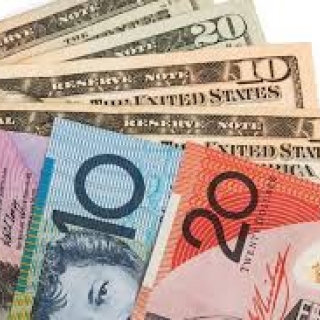


The AUD/USD pair extended its decline for the third straight session, trading near 0.6390 during the Asian session on Friday (09/05). The Australian dollar (AUD) remained pressured amid stalled progress in the US-China trade negotiations. Given the close economic ties between Australia and China, any pressure on the Chinese economy is likely to weigh on the AUD.
Beijing is unlikely to ease tariffs ahead of upcoming talks in Switzerland, according to the Global Times—citing the Chinese Embassy in the United States. This has added to market uncertainty and dampened risk sentiment.
In the United States (US), President Donald Trump has taken a tough stance on China's trade policy, following the appointment of a new envoy to Beijing. While there has been talk of tariff exemptions, the administration appears cautious, with Trump stating that they are "not looking for that many exemptions."
Meanwhile, China is reportedly considering significant changes to its real estate market—banning pre-sale of homes and allowing only sales of finished properties. The move, aimed at stabilizing the property sector, is part of a broader reform plan that is still in development. The regulation will apply to future land sales, except for public housing, and local governments will have flexibility in implementing it.
The US Dollar Index (DXY), which measures the US dollar (USD) against a basket of currencies, was trading around 100.60, supported by strong US economic data and expectations of a prolonged yield differential. However, early optimism around a US-UK trade deal has faded, as it became clear that existing 10% tariffs will remain in place. (Newsmaker23)
Source: FXstreet
The Australian dollar (AUD) strengthened against the US dollar (USD) this morning after the latest inflation data from the TD Securities–Melbourne Institute (TD-MI) showed a higher-than-expected surge...
The Australian dollar (AUD) weakened slightly against the US dollar (USD) following the release of a number of economic data, but then stabilized on Friday. Recent data showed that business activity i...
The Australian dollar (AUD) moved cautiously as markets weighed the effects of the US government shutdown, which delayed the release of important macro data and obscured visibility ahead of the Fed's ...
The Australian Dollar (AUD) maintains its position against the US Dollar (USD) on Thursday, following the release of Trade Balance data. Additionally, the AUD/USD pair moves little as traders adopt ca...
AUD/USD extends its bull run for the fourth day in a row on Wednesday, reclaiming the area above the key 0.6600 barrier, always amid the persistent offered stance in the US Dollar as investors gauge t...
Japanese stocks rise due to growing hopes that newly elected ruling-party leader Sanae Takaichi will take more aggressive fiscal steps to stimulate the economy. Heavy-industry and real-estate stocks lead gains. IHI rises 5.3% and Sumitomo Realty...
Gold strengthened early in the Asian session. This rise aligns with the upward trend in commodities, driven by macroeconomic uncertainty, a weakening dollar, and continued strong demand for hard assets. According to City Index and FOREX.com analyst...
Gold rises in the early Asian trade. There's a broad commodities uptrend, driven by macro uncertainty, a weaker dollar, and persistent demand for "hard" assets, says Fawad Razaqzada, market analyst at City Index and FOREX.com, in an email. "Gold's...
 Asian stocks surged to new highs, led by Japan's Nikkei 225, which surged more than 4% following the election of pro-stimulus lawmaker Sanae...
Asian stocks surged to new highs, led by Japan's Nikkei 225, which surged more than 4% following the election of pro-stimulus lawmaker Sanae...
 Hamas officials were in Egypt on Monday (October 6th) ahead of talks with Israel that the US hopes will lead to an end to the war in Gaza and the...
Hamas officials were in Egypt on Monday (October 6th) ahead of talks with Israel that the US hopes will lead to an end to the war in Gaza and the...
 Euro Area Stock MarketEuropean stocks closed mostly lower on Monday as fresh political turmoil in France rekindled concerns of fiscal instability...
Euro Area Stock MarketEuropean stocks closed mostly lower on Monday as fresh political turmoil in France rekindled concerns of fiscal instability...
 The S&P 500 and Nasdaq Composite closed at record highs on Monday, spurred by optimism about increased mergers and acquisitions activity after...
The S&P 500 and Nasdaq Composite closed at record highs on Monday, spurred by optimism about increased mergers and acquisitions activity after...